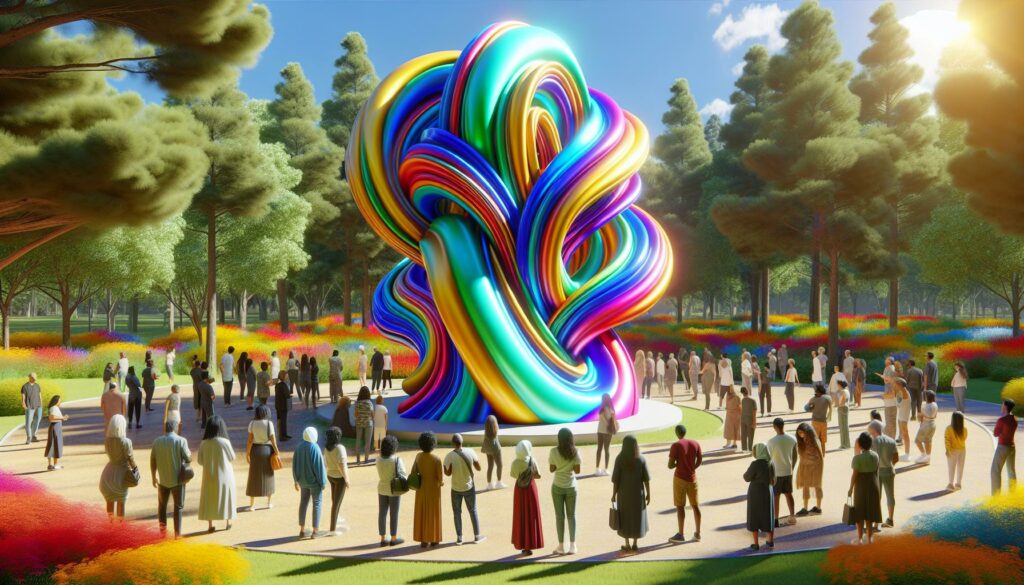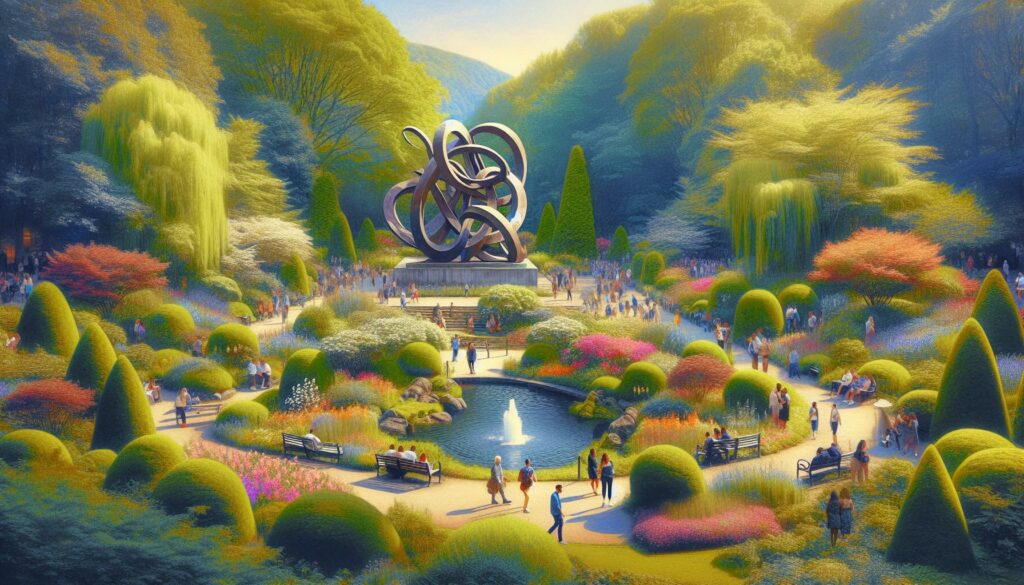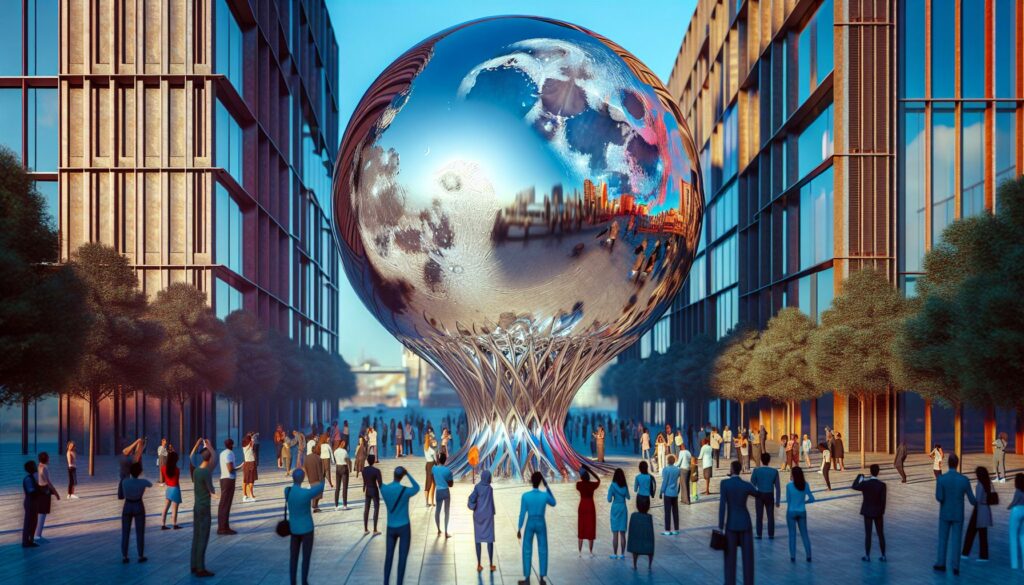When I first encountered color sculpture, I was captivated by the vibrant interplay of light and hue in three-dimensional form. This art form transcends traditional sculpture by incorporating color as a fundamental element, transforming static pieces into dynamic experiences. Artists harness the power of color to evoke emotions, challenge perceptions, and engage viewers in a dialogue that goes beyond mere aesthetics.
In a world where visual stimulation is constant, color sculpture stands out by inviting us to explore the relationship between color and shape. Each piece tells a story, revealing the artist’s intent while allowing personal interpretations. As I delve deeper into this fascinating medium, I’m excited to share insights into its evolution, techniques, and the impact it has on contemporary art. Join me on this colorful journey that celebrates creativity in its most vivid form.
Key Takeaways
- Definition of Color Sculpture: Color sculpture is an art form that integrates vibrant hues into three-dimensional works, transforming the traditional perception of sculpture by making color a fundamental element.
- Historical Origins: The use of color in sculpture dates back to ancient times, with significant developments occurring through movements like Cubism and Surrealism, influencing modern artists to experiment with innovative techniques.
- Material and Techniques: Artists employ a variety of materials (such as glass, metal, paint, resin, and fabric) and techniques (like casting, carving, assemblage, and 3D printing) to create dynamic color sculptures, enhancing interaction and emotional resonance.
- Influential Artists: Notable figures in the field, including Beverley Pepper, Maya Lin, Olafur Eliasson, Anish Kapoor, and Isaac Julien, have shaped the genre through their innovative use of color in three-dimensional art.
- Cultural and Emotional Impact: Color sculpture plays a crucial role in cultural expression and identity, evoking emotional responses that influence viewer perception and provoke thoughtful dialogue on social issues.
- Viewer Engagement: This art form invites deeper interaction and personal interpretation, making the experience of viewing color sculptures both unique and immersive for each audience member.
Color Sculpture
Color sculpture integrates vibrant hues into three-dimensional forms, transforming the viewing experience. This art form emphasizes the emotional impact of color, inviting deeper interaction with the audience.
Definition and Concept
Color sculpture represents a fusion of color and form, where color isn’t just an accent but a fundamental aspect of the artwork. Artists use various materials like glass, metal, or paint to create these pieces, resulting in dynamic expressions of light and space. The intentional use of color can alter perceptions, enhance beauty, and engage viewers on a sensory level.
Historical Background
The concept of integrating color into sculpture dates back centuries, with early examples found in ancient Greek and Roman art. Initially, sculptures featured painted surfaces that brought figures to life. In the 20th century, movements like Cubism and Surrealism embraced color as a primary element, influencing modern artists to experiment further. Contemporary artists now explore innovative techniques, expanding the boundaries of color sculpture and establishing it as a significant component of modern art.
Techniques in Color Sculpture
Color sculpture employs various techniques that enhance the fusion of color and form. Understanding material choices and methods of creation provides insight into this dynamic art form.
Material Choices
Artists select materials based on desired visual impact and tactile quality. Common choices include:
- Glass: Offers translucency, reflecting and refracting light to create vibrant color interactions.
- Metal: Provides a sleek finish; materials like aluminum or coated steel can exhibit bold colors and textures.
- Paint: Applied to surfaces of other materials, allowing for a broad spectrum of colors and finishes.
- Resin: Allows for mixing pigments, creating custom colors and unique finishes that can resemble glass without fragility.
- Fabric: Provides flexibility in texture and color, enabling three-dimensional manipulation through weaving or layering.
These materials provide various possibilities for artists, influencing the overall aesthetic and emotional resonance of the work.
Methods of Creation
Artists utilize multiple methods to produce color sculptures, showcasing their creativity and technical skill. Key methods include:
- Casting: Involves pouring liquid materials, such as resin or metal, into molds, allowing for intricate shapes and rich coloration.
- Carving: Involves removing material from a solid block, often using paint or dyes to enhance the carved surfaces with color.
- Assemblage: Combines various materials creatively, layering colors and textures to form a cohesive sculpture.
- 3D Printing: Uses advanced technology to create complex forms that integrate color throughout the structure.
- Painting: Adds layers of color on pre-existing sculptures, enriching the visual experience and altering perception.
Each method allows artists to engage with color in unique ways, contributing to the ever-evolving field of color sculpture.
Famous Color Sculptors
Many artists have made significant contributions to the field of color sculpture. Their innovative approaches and artistic visions have shaped the genre and elevated the role of color in three-dimensional art.
Notable Artists
- Beverley Pepper: Known for large-scale outdoor sculptures, Beverley integrates vibrant colors into her works, allowing viewers to experience nature through her lens.
- Maya Lin: Renowned for her environmental sculptures, Maya uses color thoughtfully to enhance the interaction between the viewer and the surrounding space.
- Olafur Eliasson: Famous for his immersive installations, Olafur employs light and color to create experiences that transform perception and understanding of the environment.
- Anish Kapoor: Anish employs rich pigments and reflective surfaces to invite viewers into his visually striking sculptures that challenge conventional ideas of space and form.
- Isaac Julien: This artist uses video installations and color projections to explore themes of identity and culture, merging sculpture with dynamic visual storytelling.
| Artist | Work | Description |
|---|---|---|
| Beverley Pepper | The Shadows of the Wind | A monumental installation featuring painted metal that interacts with light. |
| Maya Lin | Wave Field | An undulating landscape sculpted in grass, inviting exploration and reflection. |
| Olafur Eliasson | The Weather Project | A large-scale installation featuring a sun-like disc and mist that envelops the space in warm color. |
| Anish Kapoor | Cloud Gate | Also known as “”The Bean,”” this reflective sculpture plays with light, color, and the urban environment. |
| Isaac Julien | Ten Thousand Waves | A multimedia installation that combines film and color to address cultural narratives. |
These artists and their works illustrate the depth and diversity of color sculpture, redefining how we perceive and engage with art.
The Impact of Color Sculpture
Color sculpture profoundly influences how we perceive and interact with art. Its integration of hue and form creates unique experiences that extend beyond the visual realm.
Cultural Significance
Color sculpture plays a pivotal role in cultural expression and identity. Artists often incorporate colors that represent their heritage, beliefs, or social commentary. For example, vibrant color palettes reflect cultural festivals, traditions, and community stories, fostering a sense of belonging. Contemporary artists like Anish Kapoor explore cultural narratives through their innovative use of color, allowing audiences to engage with diverse perspectives. Additionally, public installations invite communities to participate in dialogue, highlighting social issues and promoting cultural awareness.
Emotional and Psychological Effects
The emotional and psychological impact of color sculpture is significant. Color evokes feelings and perceptions, influencing mood and thought patterns. Warm colors like red and yellow often evoke excitement and energy, while cool colors like blue and green provide tranquility and calmness. Artists strategically use these effects to elicit specific responses from viewers. For instance, Olafur Eliasson’s immersive installations often manipulate light and color to create transformative experiences that prompt reflection and emotional engagement. By understanding the psychological implications of color, artists forge connections with their audiences, enhancing the overall impact of their work.
Traditional Sculpture
Color sculpture captivates me in ways that traditional sculpture simply can’t. It’s an art form that invites us to experience emotions and thoughts through vibrant hues and dynamic forms. The innovative techniques and materials artists use today push the boundaries of creativity and challenge our perceptions of space and identity.
As I continue to explore this fascinating medium, I’m excited to see how contemporary artists will further redefine color sculpture. Their ability to evoke feelings and foster connections through color is nothing short of inspiring. I’m eager to share this journey with you as we celebrate the vibrant world of color sculpture together.



